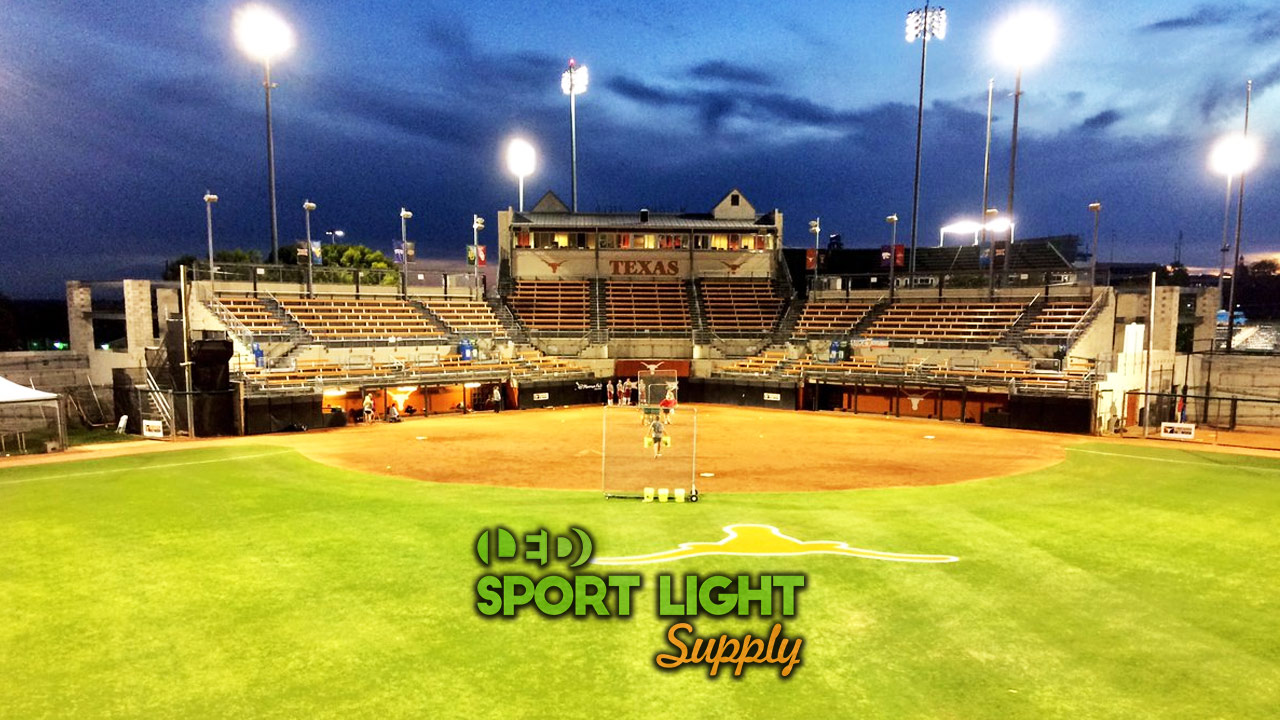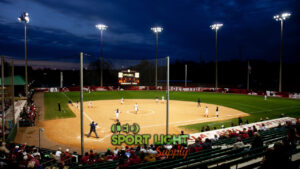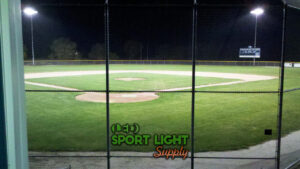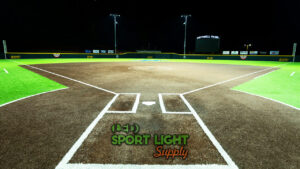The appropriate number of lights needed for a softball field will depend on several factors, including the size of the field, the desired lighting levels, and any additional considerations such as the presence of shadows or obstacles on the field. In this outline, we will outline the steps for determining the number of lights needed for a softball field and selecting and installing the appropriate lighting fixtures.
Determine the size of the softball field
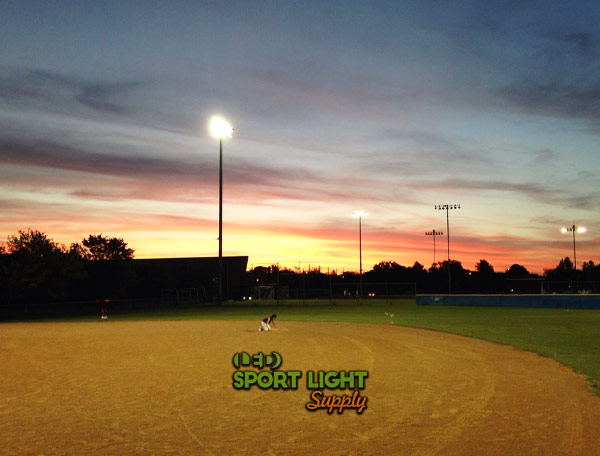 To determine the size of the softball field, you will need to measure the dimensions of the playing area. In general, the dimensions of a softball field are as follows:
To determine the size of the softball field, you will need to measure the dimensions of the playing area. In general, the dimensions of a softball field are as follows:
- The distance from home plate to the pitcher’s mound is 60 feet.
- The distance from home plate to first base is 90 feet.
- The distance from home plate to second base is 127 feet, 3 3/8 inches.
- The distance from home plate to third base is 90 feet.
- The distance from first base to third base is 180 feet.
In addition to these dimensions, you will also need to consider the area around the playing field, such as the dugouts, bullpens, and any other structures or areas that may be in the field of play.
Once you have measured the dimensions of the playing area and any additional areas, you can calculate the total size of the field in square feet or square meters.
Consider the desired lighting levels for the field
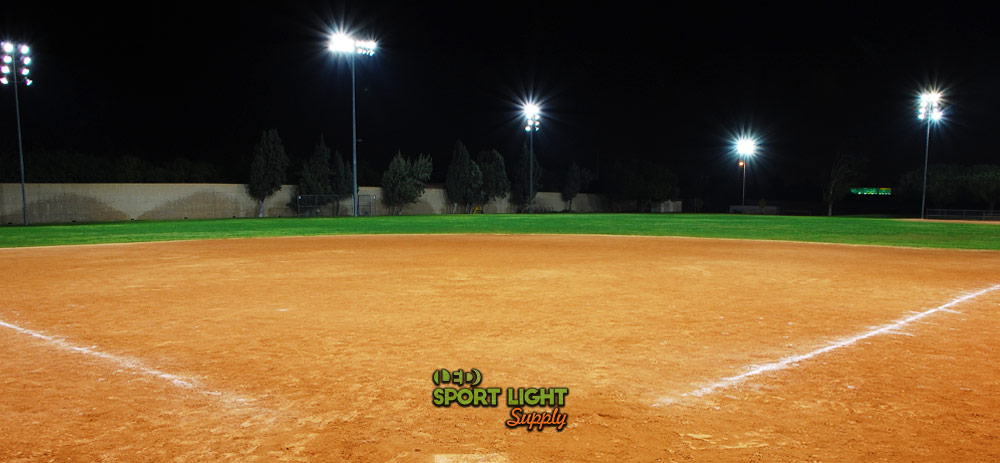
The desired lighting levels for a softball field will depend on the level of play and the needs of the players and spectators. For example, higher levels of play, such as professional or collegiate level, may require higher lighting levels to meet the standards set by governing bodies or to provide the best visibility for players and spectators. On the other hand, lower levels of play, such as recreational or youth leagues, may not require as high of lighting levels.
Calculate the number of lights needed
There are several methods for calculating the number of lights needed for a softball field based on the size of the field and the desired lighting levels. One method is to use industry-standard guidelines, which provide recommendations for the number of lights needed based on the size and type of field, as well as the desired lighting levels. These guidelines can be found in documents published by organizations such as the International Association of Lighting Designers or the Illuminating Engineering Society.
Another method is to use a lighting design software tool, which can help you calculate the number of lights needed based on the size of the field and the desired lighting levels. These tools allow you to input the dimensions of the field and the desired lighting levels, and they will calculate the number of lights needed and the optimal placement of the lights.
In general, a softball field will require a minimum of 30-50 foot-candles of light at the playing surface to meet professional lighting standards. To achieve this level of illumination, you may need to use a combination of floodlights, spotlights, and other types of lighting fixtures. The exact number of lights needed will depend on the intensity of the lights and the size of the field.
Regardless of the method used, it is necessary to ensure that the number of lights calculated is sufficient to provide the desired lighting levels for the field. This may require adjusting the calculations based on factors such as the location of the field, the presence of shadows or obstacles on the field, and the time of year.
Take into account any additional factors
There are several additional factors that can affect the lighting needs of a softball field and should be taken into account when determining the number of lights needed. These include:
The presence of shadows or obstacles on the field
Shadows or obstacles on the field can create areas of low light that may require additional lighting to provide sufficient illumination.
The location of the field
The location of the field can affect the lighting needs in a number of ways. For example, fields located in high-latitude regions may require more lights due to the shorter periods of daylight, while fields located at higher elevations may require fewer lights due to the increased intensity of sunlight at higher altitudes.
The time of year
The time of year can also affect the lighting needs of a softball field. During the winter months, for example, there may be fewer hours of daylight and the sun may be lower in the sky, which can require additional lighting to provide sufficient illumination.
Taking these factors into account can help ensure that the number of lights calculated for the field is sufficient to provide the desired lighting levels and ensure the safety and visibility of the players and spectators.
Select the appropriate type of lighting fixtures for the field
Once you have determined the number of lights needed for the softball field, the next step is to select the appropriate type of lighting fixtures. There are several factors to consider when selecting lighting fixtures for a softball field, including:
The height of the poles
The height of the poles should be sufficient to provide the desired lighting levels for the field while minimizing shadows. Typically, poles for a softball field should be at least 30 feet tall, although higher poles may be needed depending on the size of the field and the presence of obstacles or other structures.
The intensity of the lights
The intensity of the lights should be sufficient to provide the desired lighting levels for the field. Higher intensity lights may be needed for higher levels of play or for larger fields, while lower intensity lights may be sufficient for lower levels of play or smaller fields.
The color temperature of the light
The color temperature of the light can affect the visibility of the players and the overall appearance of the field. Warmer color temperatures (such as 2700K) may be more suitable for fields with natural grass, while cooler color temperatures (such as 4000K or 5000K) may be more suitable for fields with artificial turf.
Install the lights according to the manufacturer’s recommendations
Once you have selected the appropriate lighting fixtures for the softball field, the next step is to install the lights according to the manufacturer’s recommendations and local building codes. This may involve hiring an electrician or other professional to assist with the installation, as installing lighting fixtures can be a complex and potentially dangerous task.
When installing the lights, it is recommended to follow the manufacturer’s recommendations and local building codes to ensure the safety and proper functioning of the lights. This may include things such as the proper grounding of the lights, the installation of surge protection devices, and the use of appropriate wiring and electrical connections.
It is also necessary to properly position the lights to provide the desired lighting levels for the field and minimize shadows. This may involve using a lighting design software tool or consulting with a lighting professional to determine the optimal placement of the lights.
Once the lights are installed, we should test them to ensure they are providing sufficient illumination and are properly aligned. This may involve adjusting the lights as needed to fine-tune the lighting levels and minimize shadows.
Test the lights
Once the lights for the softball field are installed, we need to test them to ensure they are providing sufficient illumination and are properly aligned. This can be done by conducting a lighting test during a practice or game to determine if the lighting levels are sufficient for the players and spectators.
There are several ways to test the lights, including using a light meter to measure the illumination levels on the field or visually observing the field to determine if the lighting levels are sufficient.
If the lighting levels are not sufficient or the lights are improperly aligned, adjustments may be needed to improve the lighting levels and eliminate shadows. This may involve adjusting the position of the lights or replacing the bulbs with higher intensity bulbs.

